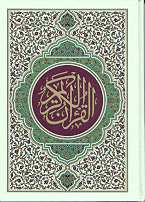In the Name of God, Most Gracious, Most Merciful
Are all the Arabic versions of Quran the same?
Many Muslims are misled by the Muslim scholars who do not openly discuss and present the facts when it comes to the Quran or Islam in general. We are all aware for example that the Muslim scholars for centuries claimed that prophet Muhammad was illiterate to prove that he produced a miraculous book, the Quran. Such claim was made despite the repeated assertion in the Quran that the word "Ummy" does not mean illiterate and several Quranic verses prove the prophet being a literate man. These scholars were unaware of the true miracle of the Quran and therefore made up lies about the prophet and even claimed him miracles that he never performed. One of the famous misinformation spread by these scholars is that all the Qurans in the world are identical, and that it is free from any variation. This is not true and has nothing to do with God's promise in verse15:9. Although the Christian missionaries like to attack the Quran for such variations they only show their ignorance with the Quran and its miracle. Please see our article Preserving and protecting Quran that explains the meaning behind 15:9 and to see the human errors in the oldest manuscripts of the Quran. Christian missionaries specially are fond of bringing up the issue of the Hafs and Warsh versions of the Arabic Quran to surprise the un-educated Muslims who have been fooled for many years by their Mullas, Imams or scholars. As it turned out, these variations in the writing (or reading) of the Quran was a positive finding in recognizing the significance of the mathematical miracle of the Quran and its applications.
It is well known that the kufic script in which the Quran was originally written contained no indication of vowels or diacritical points. This resulted in variant readings of the Quran. The way in which the Quran was recited by each of the readers was formerly recorded in textual form. This resulted in the presence of many transmissions, and accordingly the Quran (Mus-haf) was written differently in different areas. We know however that the Quran given to Muhammad was in one form ,which means all the various transmissions only represent the different readers and do not necessarily represent the Quran revealed to prophet Muhammed and preserved in Master Tablets at God Almighty.
[85:21-22] Indeed, it is a glorious Quran. In a preserved master tablet.
The predominant reading today, spread by Egyptian Quran readers, is that of Asim in the transmission of Hafs (d. 190/805). In Morocco, the reading is that of Nafi` in the transmission of Warsh (d. 197/812) and the Moroccan Qurans are written accordingly. In Sudan, Nigeria and Central Africa, the prevailing reading is that of Abu `Amr in the version of al-Duri. The transmissions of Hafs, Warsh, Qalun and Al-Duri are still in print today.
The version of Hafs transmission which is also the most commonly used and widespread transmission was proven by the mathematical miracle of the Quran to be the version taken after the prophet Muhammed, as it meets all the criteria built in the Quran's mathematical structure as God promised in 15:9, 85:21-22 and 74:30-31. This includes the Rasm, (Orthography) of the Quran as well as the numbering, naming and division of the suras and verses. All the other versions deviated from the criteria of the mathematical structure of the Quran and therefore can be rejected.
The following table is meant to educate the Muslims and show them how the Hafs Mus-haf differs from the Warsh Mus-haf and it is a proof that human errors were allowed in the writing and collection of the Quran while preserving the right version (in this case Hafs) that will be supported and confirmed by God's Mathematical Miracle of the Quran. These are only some examples.
The writing of the Quran according to Hafs | The writing of the Quran according to Warsh |
 surah 5:54 (yartadda) |  surah 5:54 (yartadid) |
 surah 91:15 (wa la yakhaafu) |  surah 91:15 (fa la yakhaafu) |
 surah 3:133 (wasaari'uu) |  surah 3:133 (saari'uu) |
 surah 2:132 (wawassaa) |  surah 2:132 (wa'awsaa) |
 surah 2:140 (taquluna) |  surah 2:140 (yaquluna) |
 surah 2:259 (nunshizuhaa) |  surah 2:259 (nunshiruhaa) |
 surah 3:81 (ataytukum) |  surah 3:81 (ataynakum) |
 surah 2:132 (himu) |  surah 2:132 (hiimu) |
 surah 2:214 (yaquula) |  surah 2:214 (yaquulu) |
We agree with the scholarly understanding that none of the differences, whether vocal (vowel and diacritical points) or graphic (basic letter), between the transmission of Hafs and the transmission of Warsh has any great effect on the meaning. However, the Mathematical Miracle of the Quran supports ONLY one version, the Hafs transmission which is the most commonly used version of transmission. The Rasm (Orthography) of Hafs follows the pattern of the mathematical structure of the Quran as well as the numbering of the suras and verses. In reality it shows how the Mathematical miracle of the Quran is working to confirm the preserved Quran as promised by God.
CONCLUSION.
There are various versions of the Arabic Quran that are still in print. They differ in many aspects although they convey the same meaning. God has provided us with the tool to verify the correct version and confirm His preservation of the Quran. The Mathematical miracle of the Quran has proved that the Hafs transmission maintained the built in mathematical structure of the Quran.